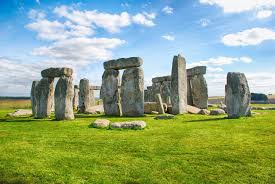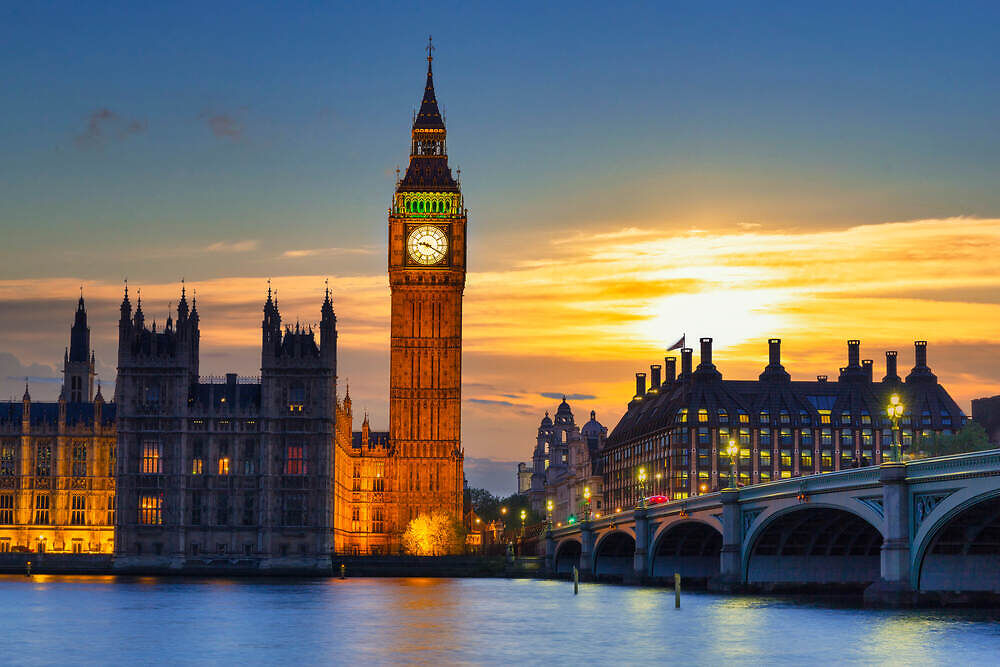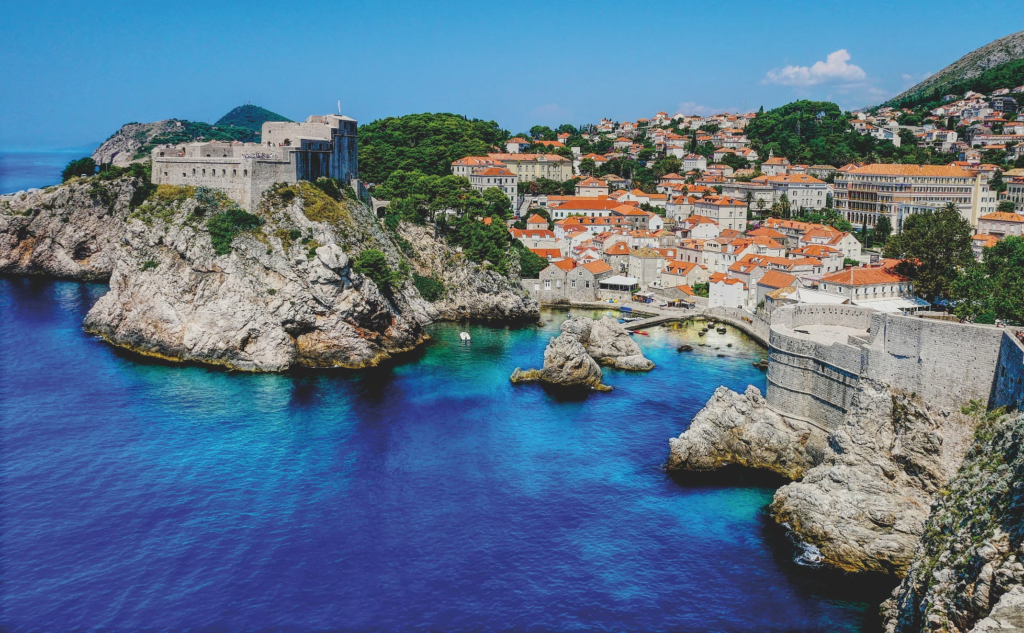Find out the best time to visit Europe based on seasons, events, and travel goals. Plan smart with this ultimate Europe travel guide.
Europe is like a perfectly curated book—each season opens a new chapter full of charm, color, and experience. From the tulip fields of the Netherlands in spring to the snowy Alps in winter, knowing the best time to visit Europe can truly shape the journey of a lifetime.
Whether you’re a first-time visitor or a seasoned traveler, this guide will help you choose the right time to explore the continent based on your interests, budget, and travel style.
Table of Contents
| Sr# | Headings |
|---|---|
| 1 | Why Your Travel Timing Matters in Europe |
| 2 | Overview of Europe’s Climate Zones |
| 3 | Spring (March to May): Blooming Beauty and Mild Weather |
| 4 | Summer (June to August): Peak Season and Festival Fever |
| 5 | Autumn (September to November): Golden Landscapes and Fewer Crowds |
| 6 | Winter (December to February): Snow, Christmas Markets, and Ski Trips |
| 7 | Best Time for Budget Travel in Europe |
| 8 | Best Time for a Romantic Getaway |
| 9 | Best Time for Family Holidays |
| 10 | Best Time for Festivals and Local Culture |
| 11 | Month-by-Month Europe Travel Overview |
| 12 | Best Time for Visiting Specific Regions (North, South, East, West Europe) |
| 13 | Off-Peak Travel Tips and Benefits |
| 14 | Packing Essentials for Each Season |
| 15 | Final Thoughts: Choosing Your Perfect Time to Visit Europe |
1. Why Your Travel Timing Matters in Europe
Europe is a continent of contrasts. The weather in Spain in August is totally different from Norway during the same month. That’s why choosing the right time is key—whether you’re chasing the sun, the snow, or the Northern Lights.
2. Overview of Europe’s Climate Zones
Europe isn’t one climate zone—it’s many:
- Southern Europe: Mediterranean climate (hot summers, mild winters)
- Western Europe: Mild, maritime climate (UK, France, Netherlands)
- Eastern Europe: Cold winters, warm summers
- Northern Europe: Long, cold winters and cool summers
- Alpine regions: Snowy winters, fresh summers
This mix means there’s always a place in Europe worth visiting, no matter the month.
3. Spring (March to May): Blooming Beauty and Mild Weather
Spring in Europe is like a gentle awakening. Cities start to buzz, flowers bloom, and the weather is just right—not too hot, not too cold.
Ideal for:
- Cherry blossoms in Paris
- Tulip fields in the Netherlands
- Exploring Italy and Greece without summer crowds
If you’re into comfortable sightseeing and photography, this is one of the best times to visit Europe.
4. Summer (June to August): Peak Season and Festival Fever
This is Europe’s high season—and it shows. Long daylight hours, beach-ready weather, and festivals at every turn make summer magical.
Highlights:
- Mediterranean beaches (Spain, Italy, Croatia)
- Music festivals in Germany, UK, and Eastern Europe
- Hiking in the Alps
Downsides: Crowds and higher prices. Book early to save on accommodations and flights.
5. Autumn (September to November): Golden Landscapes and Fewer Crowds
Fall in Europe is cozy and colorful. Think crunchy leaves, wine harvests, and brisk air.
Best for:
- Visiting vineyards in France and Italy
- Exploring historic cities like Prague or Budapest
- Mild weather for sightseeing with fewer tourists
If you’re someone who prefers peaceful travel experiences, fall is your golden ticket.
6. Winter (December to February): Snow, Christmas Markets, and Ski Trips
Winter brings out Europe’s festive side. Picture snowy castles, fairy-tale markets, and ski slopes.
Top activities:
- Christmas markets in Germany, Austria, and Switzerland
- Northern Lights in Scandinavia
- Skiing in the Alps or Pyrenees
It’s cold, yes—but it’s also incredibly magical. Just pack warmly and prepare for shorter days.
7. Best Time for Budget Travel in Europe
Looking to save?
- January to March: Cheapest flights and hotel rates
- Late autumn (November): Fewer tourists and lower prices
- Avoid summer and Christmas week if you’re watching your wallet
Traveling Europe in the off-season can be a rich experience for a lighter cost.
8. Best Time for a Romantic Getaway
Europe is made for love. The best time depends on your style:
- Spring in Paris or Venice – blooms and boat rides
- Summer in Santorini – sunsets and sea views
- Autumn in Prague – romantic walks and cozy cafés
- Winter in Vienna – candle-lit dinners and snowfall
Each season brings a different kind of romance.
9. Best Time for Family Holidays
Traveling with kids?
- Summer: Best for school holidays and beach trips
- Spring/Autumn: Great for sightseeing without overwhelming heat
- Winter: Fun if you’re hitting the slopes or visiting Santa in Lapland
Choose destinations with family-friendly attractions and mild weather.
10. Best Time for Festivals and Local Culture
Love culture and energy?
- Carnival in Venice (February)
- Oktoberfest in Germany (late September–early October)
- Edinburgh Fringe Festival (August)
- La Tomatina in Spain (August)
- Christmas markets (December)
Plan your trip around festivals for unforgettable cultural imm
12. Best Time for Visiting Specific Regions
Northern Europe (Scandinavia):
- Best in summer for long daylight and outdoor activities
Southern Europe (Italy, Greece, Spain):
- Spring and autumn are ideal for fewer crowds and perfect weather
Eastern Europe (Hungary, Poland, Romania):
- May–June and September–October are best for budget and beauty
Western Europe (France, UK, Germany):
- Late spring and early fall balance good weather and fewer tourists
13. Off-Peak Travel Tips and Benefits
- Cheaper flights and hotels
- Shorter lines at major attractions
- A more local experience without crowds
- Opportunities to explore hidden gems
Traveling in shoulder or off-seasons often means more peace and better value.
14. Packing Essentials for Each Season
Spring:
Light layers, rain jacket, walking shoes
Summer:
Sunscreen, summer wear, hat, refillable water bottle
Autumn:
Warm layers, scarf, umbrella
Winter:
Heavy coat, gloves, boots, thermal layers
Always check the regional forecast—Europe’s climate can vary widely within the same season.
15. Final Thoughts: Choosing Your Perfect Time to Visit Europe
There’s no single best time to visit Europe—there’s only the best time for you. Whether you’re seeking sunny beaches, snowy slopes, cultural festivals, or quiet old towns, Europe has something for every taste in every season.
Travel with your heart, pack with your brain, and let Europe do the rest.
Frequently Asked Questions (FAQs)
1. What is the best month to visit Europe overall?
May or September strike the perfect balance between pleasant weather, fewer crowds, and reasonable prices.
2. When is Europe most expensive to visit?
July and August are peak travel months, especially in Western and Southern Europe.
3. Is winter a good time to visit Europe?
Yes! Winter is magical for Christmas markets, skiing, and festive vibes—just bundle up!
4. Which month is best for budget travelers?
January, February, and November typically offer the lowest rates and fewer tourists.
5. When is the best time to see the Northern Lights in Europe?
September to March, with the best chances in Norway, Finland, and Iceland.
Top Places to Visit in Eastern Europe

Discover the best places to visit in Eastern Europe—from castles to cities. Uncover hidden gems and historic wonders across Eastern Europe now
Eastern Europe often flies under the radar, but that’s exactly what makes it special. It’s where storybook towns, epic castles, and jaw-dropping nature wait to be discovered—without the crowds of Western hotspots.
Looking for rich culture, warm hospitality, and stunning scenery at a fraction of the cost? You have come to the right place. Let’s dive into the best places to visit in Eastern Europe, where every stop feels like a well-kept secret waiting to be uncovered.
- Why Visit Eastern Europe?
- The Fairytale City of Prague, Czech Republic
- Budapest, Hungary – Thermal Baths and Grand Views
- Kraków, Poland – Charm of the Old World
- Digital Meets Medieval in Tallinn, Estonia
- Riga, Latvia – Art Nouveau and Nightlife
- Vilnius, Lithuania – Bohemian Soul
- Bucharest, Romania – Paris of the East
- The Historical Layers of Sofia, Bulgaria
- Belgrade, Serbia – Grit and Grace
- Ljubljana, Slovenia – Beautiful and Green
- Bratislava, Slovakia – Small but Mighty
- Coffee, Culture, and Cobblestones in Lviv, Ukraine
- Castles and the Carpathians in Transylvania, Romania Given are
- Travel Tips for Easter
- Why Visit Eastern Europe?
Eastern Europe is like that underrated movie your friend swears by—it surprises you, then becomes your favorite. It is genuine, reasonably priced, and crammed with centuries of culture. From medieval cities to lush landscapes, this region has something for everyone—history lovers, foodies, adventurers, and digital nomads alike. - Prague, Czech Republic – The Fairytale City
With its gothic spires and cobblestone streets, Prague looks straight out of a fantasy novel.
Top Attractions:
Charles Bridge
Prague Castle
Astronomical Clock
Old Town Square
Spring or early fall are the best times to visit. 3. Budapest, Hungary – Thermal Baths and Grand Views
Split by the Danube, Budapest is a city of contrasts: old and new, relaxing and energetic.
Don’t Miss:
Széchenyi Thermal Baths
Parliament Building
The Bastion for Fishermen Ruin Bars in the Jewish Quarter
Best Time to Visit: May to September - Kraków, Poland – Old World Charm
Kraków has charming streets, a rich history, and a lively student vibe all in one place. Explore:
Wawel Castle
Main Market Square
Jewish Quarter (Kazimierz)
Trip to Auschwitz-Birkenau for the day Best Time to Visit: May or September - Estonia’s Tallinn, where digital meets medieval Tallinn is where technology and tradition collide. Its Old Town is a UNESCO site, yet it’s also a digital powerhouse.
Highlights:
Toompea Castle
St. Olaf’s Church
Creative district of Kalamaja Cozy cafes with Wi-Fi galore
Best Time to Visit: Summer (June–August)

- Why Visit Eastern Europe?
Eastern Europe is like that underrated movie your friend swears by—it surprises you, then becomes your favorite. It is genuine, reasonably priced, and crammed with centuries of culture. From medieval cities to lush landscapes, this region has something for everyone—history lovers, foodies, adventurers, and digital nomads alike. - Prague, Czech Republic – The Fairytale City
With its gothic spires and cobblestone streets, Prague looks straight out of a fantasy novel.
Top Attractions:
Charles Bridge
Prague Castle
Astronomical Clock
Old Town Square
Spring or early fall are the best times to visit. 3. Budapest, Hungary – Thermal Baths and Grand Views
Split by the Danube, Budapest is a city of contrasts: old and new, relaxing and energetic.
Don’t Miss:
Széchenyi Thermal Baths
Parliament Building
The Bastion for Fishermen Ruin Bars in the Jewish Quarter
Best Time to Visit: May to September - Kraków, Poland – Old World Charm
Kraków has charming streets, a rich history, and a lively student vibe all in one place. Explore:
Wawel Castle
Main Market Square
Jewish Quarter (Kazimierz)
Trip to Auschwitz-Birkenau for the day Best Time to Visit: May or September - Estonia’s Tallinn, where digital meets medieval Tallinn is where technology and tradition collide. Its Old Town is a UNESCO site, yet it’s also a digital powerhouse.
Highlights:
Toompea Castle
St. Olaf’s Church
Creative district of Kalamaja Cozy cafes with Wi-Fi galore
Best Time to Visit: Summer (June–August)

- Slovenia’s Ljubljana is beautiful and green. This small capital punches above its weight with eco-friendly vibes and a fairytale feel.
Things to Do: Ljubljana Castle
Dragon Bridge
River cruises
Day trips to Bled Lake. Best Time to Visit: May–October - Bratislava, Slovakia – Small but Mighty
Bratislava is a cozy, colorful, and surprising city that is frequently overlooked. Must-Do:
Castle of Bratislava Exploring the Old Town UFO Observation Deck
Locally produced beer April to June is the best time to visit. 13. Lviv, Ukraine – Coffee, Culture, and Cobblestones
The cultural capital of Ukraine, Lviv is full of cafes, jazz, and history. Explore:
Lviv Opera House
Rynok Square
Coffee cellars kept secret Street musicians and cozy bookstores
Best Time to Visit: May–June or September - Romanian Transylvania: Carpathian Castles Yes, it’s real—and no, it’s not just about Dracula. Transylvania is rugged, romantic, and totally magical.
Top Ranks: Bran Castle (Dracula’s Castle)
Sighişoara (a real medieval town)
Carpathian hikes
Traditional Romanian villages
Best Time to Visit: May–October - Tips for Traveling in Eastern Europe
Use public transport: It’s reliable and cheap.
Learn a few phrases: Locals appreciate it.
Be aware of differences in currency: not every nation uses the euro. Stay in the city’s center because it’s easy to get around. Try local food: Think goulash, pierogi, and stuffed cabbage.
Top Places to Visit in Western Europe
Explore the top places to visit in Western Europe, from Paris to Amsterdam. Discover iconic cities, scenic landscapes, and unforgettable experiences!

When people dream of Europe, they often picture Western Europe—and for good reason. This part of the continent is home to some of the world’s most famous cities, breathtaking landscapes, and legendary landmarks. Whether this is your first or tenth trip to Western Europe, there is always something new to discover. Let’s dive into the top places to visit in Western Europe that should be on every traveler’s bucket list.
- Why Western Europe Captivates Travelers
- Paris, the “City of Light” in France
- London, England – A Global Icon
- Amsterdam, Netherlands – Canals and Culture
- Barcelona, Spain – Art, Beach, and Energy
- Rome, Italy – The Eternal City
- Vienna, Austria – Elegant and Timeless
- Munich, Germany – Beer Halls and Castles
- Zurich, Switzerland – Luxury Meets Nature
- Brussels, Belgium – Waffles and World Politics
- Edinburgh, Scotland – Castles and Festivals
- Porto, Portugal – Wine with a View
- Nice, France – Glamour on the Riviera
- Lakeside Serenity, Lucerne, Switzerland
- Tips for Traveling in Western Europe
. Why Western Europe Captivates Travelers
Western Europe is like a living postcard—everywhere you look, there’s something awe-inspiring. It has gothic cathedrals, world-class museums, mountains, Mediterranean beaches, and a beautiful balance of old-world charm and modern convenience. 2. The City of Light, Paris, France Paris is unlike any other location. Romantic, artistic, and endlessly stylish, Paris is a must-see.
Top Highlights:
The Louvre Museum and the Eiffel Tower Montparnasse and Notre Dame Cruises on the Seine River Café culture and croissants
Best Time to Visit: April to June or September
- London, England – A Global Icon
History, theater, shopping, and global cuisine all collide in England’s buzzing capital.
Things to See: The Buckingham Palace and Big Ben (Free!) British Museum Tower Bridge & London Eye
Broadway shows Best Time to Visit: May to September - Amsterdam, Netherlands—Culture and Canals Bike-friendly, picturesque, and rich in culture, Amsterdam is as cozy as it is cool.
Top Spots:
Van Gogh Museum
Anne Frank House
Canal excursions Tulip fields (spring)
Best Time to Visit: April–May or September - Barcelona, Spain – Art, Beach, and Energy
Because of Gaud’s surreal designs, Barcelona has the heart of an artist and the soul of Spain. Must-See:
Park Güell and the Sagrada Familia Gothic Quarter and La Rambla Tapas bars
Barceloneta Beach
Best Time to Visit: May or September

. Why Western Europe Captivates Travelers
Western Europe is like a living postcard—everywhere you look, there’s something awe-inspiring. It has gothic cathedrals, world-class museums, mountains, Mediterranean beaches, and a beautiful balance of old-world charm and modern convenience. 2. The City of Light, Paris, France Paris is unlike any other location. Romantic, artistic, and endlessly stylish, Paris is a must-see.
Top Highlights:
The Louvre Museum and the Eiffel Tower Montparnasse and Notre Dame Cruises on the Seine River Café culture and croissants
Best Time to Visit: April to June or September
- London, England – A Global Icon
History, theater, shopping, and global cuisine all collide in England’s buzzing capital.
Things to See: The Buckingham Palace and Big Ben (Free!) British Museum Tower Bridge & London Eye
Broadway shows Best Time to Visit: May to September - Amsterdam, Netherlands—Culture and Canals Bike-friendly, picturesque, and rich in culture, Amsterdam is as cozy as it is cool.
Top Spots:
Van Gogh Museum
Anne Frank House
Canal excursions Tulip fields (spring)
Best Time to Visit: April–May or September - Barcelona, Spain – Art, Beach, and Energy
Because of Gaud’s surreal designs, Barcelona has the heart of an artist and the soul of Spain. Must-See:
Park Güell and the Sagrada Familia Gothic Quarter and La Rambla Tapas bars
Barceloneta Beach
Best Time to Visit: May or September

- Rome, Italy – The Eternal City
Rome is one giant open-air museum where ancient ruins meet modern life.
Don’t Miss:
Forum and Colosseum in Rome Vatican City & St. Peter’s Basilica
Trevi Fountain
Trastevere’s charm
Best Time to Visit: April–June or October - Vienna, Austria—Classic and enduring Vienna is classical music, royal palaces, and grand cafés rolled into one.
Top Attractions:
Schönbrunn Palace
Belvedere Museum
Vienna State Opera
Coffee and sachertorte
Best Time to Visit: May–June or December (for Christmas markets) - Castles and beer halls in Munich, Germany Beyond Oktoberfest, Munich is a mix of Bavarian tradition and cosmopolitan flair.
Things to Do:
Marienplatz & Glockenspiel
Neuschwanstein Castle (day trip)
English Garden
Hofbräuhaus Beer Hall
September or spring are the best times to visit for Oktoberfest. 9. Zurich, Switzerland – Luxury Meets Nature
Switzerland’s financial capital is clean, stylish, and close to stunning Alpine scenery.
Explore:
Lake Zurich boat rides
Old Town (Altstadt)
Day trips to the Alps
Swiss chocolate tasting
Best Time to Visit: June to August or December (for snowy vibes) - Belgian Waffles and World Politics in Brussels Brussels is where European history meets modern diplomacy—with great food on the side.
Top Highlights:
Grand Place
Atomium
Comic book murals
Belgian beer and fries
Best Time to Visit: April to October